king edward vii

 Halley’s comet, named after astronomer Edmond Halley, only passes by Earth every 76 years or so. These days, such an event would bring excitement, viewing parties, planned trips to nearby dark sights as far from the city lights as possible, but then we know much more about comets than the people of 1910, when Halley’s Comet visited. Of course, the internet wasn’t invented in 1910, nor were computers. People only had the news paper to get their news from. This was a big story. People were so excited, that telescope sales skyrocketed as the comet neared. Hotels even offered special deals, so people could gather on top of their roofs to watch the comet pass.
Halley’s comet, named after astronomer Edmond Halley, only passes by Earth every 76 years or so. These days, such an event would bring excitement, viewing parties, planned trips to nearby dark sights as far from the city lights as possible, but then we know much more about comets than the people of 1910, when Halley’s Comet visited. Of course, the internet wasn’t invented in 1910, nor were computers. People only had the news paper to get their news from. This was a big story. People were so excited, that telescope sales skyrocketed as the comet neared. Hotels even offered special deals, so people could gather on top of their roofs to watch the comet pass.
Of course, not everyone was pleased with the comet’s appearance. There were those who believed the shooting star would end civilization. That “brainstorm” was thanks to the mind of a French astronomer named Camille Flammarion, who believed the comet’s 24-million-mile long tail contained a poisonous cyanogen gas that “would impregnate the atmosphere and possibly snuff out all life on the planet” and and while the idea was totally crazy, many unsuspecting people believed the story and it caused chaos.
Part of the problem with misinformation is that some people…especially new media, known for the idea of sensationalistic stories that are scary enough or wild enough to sell papers, or in this day and age, airtime, whether the story is true, credible, or even honest. To the news media, truth is not the most important part of a story. You have to be able to catch the eyes, and hold the imaginations of the people or the story will quickly 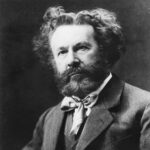 be relegated to the back of the paper. Unfortunately, The New York Times’ piece on Flammarion’s apocalyptic theory encouraged some less-trustworthy newspapers to run wild with the story. Following the story’s breaking, in addition to telescopes, people started ransacking stores for gas masks. Con men, or as we call them today, scammers made a killing by selling anti-comet pills, and some people worried the comet would “cause the Pacific to change basins with the Atlantic” and turn the world into “one heterogeneous mass of chaotic confusion.” Worried parishioners flocked to their churches, and according to science writer Matt Simon, people actually sealed up their keyholes to keep poison out of their homes.
be relegated to the back of the paper. Unfortunately, The New York Times’ piece on Flammarion’s apocalyptic theory encouraged some less-trustworthy newspapers to run wild with the story. Following the story’s breaking, in addition to telescopes, people started ransacking stores for gas masks. Con men, or as we call them today, scammers made a killing by selling anti-comet pills, and some people worried the comet would “cause the Pacific to change basins with the Atlantic” and turn the world into “one heterogeneous mass of chaotic confusion.” Worried parishioners flocked to their churches, and according to science writer Matt Simon, people actually sealed up their keyholes to keep poison out of their homes.
When the event was over, and the comet had passed, however, the gas masks proved totally worthless, because…well, there was no poison. Sure, a few people blamed the meteor for King Edward VII’s death, but there’s not a lot of science backing that claim. My guess is that the media was behind that theory too, as a way of keeping the panic alive. Interestingly, Mark Twain also passed away Of a heart attack, from a known heart condition, as the comet flew overhead, but he had refused medical help for the condition saying that, “I came in with Halley’s Comet in 1835. It is coming again next year, and I expect to go out with it. It will be the greatest disappointment of my life if I don’t go out with Halley’s Comet. The Almighty has said, no doubt: “Now here are these two unaccountable freaks; they came in together, they must go out together.” Twain had been born as the comet last flew by, in 1835.
Twain and King Edward VII were not the only death that the comet can take credit for, or should we say be associated with. The media sensationalism caused a number of people to commit suicide out of fear of the supposed coming chemical chaotic after effects of the tail of the comet. People were worried about dying a slow 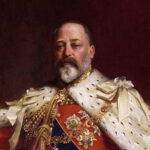
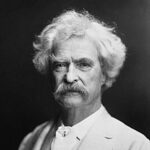 and painful death by way of the poisonous cyanogen gas that was predicted by Flammarion and The New York Times. Their combined irresponsibility cause such horrible chaos, and yet they walked off scot free, while lives were lost due to their blatant irresponsibility. Most people know that you don’t stand up and yell, “Fire!!” in a crowded theater, but somehow they totally miss the point when it comes to scaring people just to sell a newspaper. The Earth’s May 19, 1910 passing through the tail of Halley’s Comet, while a very cool event, was nothing more than just that…a very cool event.
and painful death by way of the poisonous cyanogen gas that was predicted by Flammarion and The New York Times. Their combined irresponsibility cause such horrible chaos, and yet they walked off scot free, while lives were lost due to their blatant irresponsibility. Most people know that you don’t stand up and yell, “Fire!!” in a crowded theater, but somehow they totally miss the point when it comes to scaring people just to sell a newspaper. The Earth’s May 19, 1910 passing through the tail of Halley’s Comet, while a very cool event, was nothing more than just that…a very cool event.
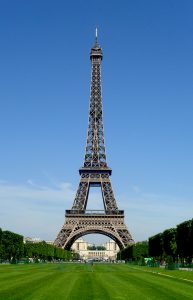
 When we think of Paris, the first thing that comes to mind is the Eiffel Tower. If history had been different, those of us alive today would most likely be completely unaware of the historical icon. The Eiffel Tower was built in 1889, and since that time, over 200,000,000 people have visited it, which makes the Eiffel Tower the most visited monument in the world. The Eiffel Tower was erected for the Paris Exposition, and was inaugurated by the Prince of Wales, who went on to become King Edward VII. The tower was the entrance arch to exposition, and was the most visited site during the Exposition. As they were preparing for the Exposition, seven hundred proposals were submitted in a design competition. In the end, it was the radical design of French engineer Alexandre Gustave Eiffel that was unanimously chosen. Eiffel was assisted in the design by two engineers, Maurice Koechlin and Emile Nougier, and architect Stephen Sauvestre.
When we think of Paris, the first thing that comes to mind is the Eiffel Tower. If history had been different, those of us alive today would most likely be completely unaware of the historical icon. The Eiffel Tower was built in 1889, and since that time, over 200,000,000 people have visited it, which makes the Eiffel Tower the most visited monument in the world. The Eiffel Tower was erected for the Paris Exposition, and was inaugurated by the Prince of Wales, who went on to become King Edward VII. The tower was the entrance arch to exposition, and was the most visited site during the Exposition. As they were preparing for the Exposition, seven hundred proposals were submitted in a design competition. In the end, it was the radical design of French engineer Alexandre Gustave Eiffel that was unanimously chosen. Eiffel was assisted in the design by two engineers, Maurice Koechlin and Emile Nougier, and architect Stephen Sauvestre.
Believe it or not, there was some controversy over the winning design. The Paris city government actually received a petition, signed by about 300 people in a effort to prevent the city government from constructing the tower. Some famous personalities like Guy de Maupassant, Emile Zola, and Charles Garnier also signed the petition. They felt that the Eiffel Tower would be useless and monstrous, and it endangered French art and history. Wow!! Today, they would be stunned at the beauty it posses, especially when it is lit up at night.
Of course, the tower was ultimately built and it was given out for a 20-year lease. When the lease expired in 1909, it was planned to tear down the iconic tower. In the end, it was its antenna that saved the tower, as it was used for telegraphy. The tower also played an important role in capturing the infamous spy Mata Hari 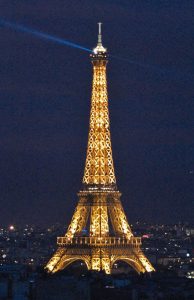
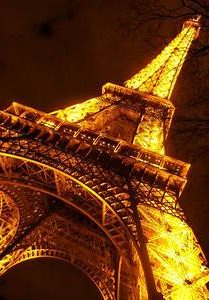 during World War I. Following these events, the tower gained acceptance among the French. As 1910 arrived, the Eiffel Tower became a part of the International Time Service and the French Radio has been using the tower since 1918. The French Television started using the height of the tower from 1957. I don’t really know if most of us knew about all the other uses for the Eiffel Tower, other than the tourist attraction most of us connect with it.
during World War I. Following these events, the tower gained acceptance among the French. As 1910 arrived, the Eiffel Tower became a part of the International Time Service and the French Radio has been using the tower since 1918. The French Television started using the height of the tower from 1957. I don’t really know if most of us knew about all the other uses for the Eiffel Tower, other than the tourist attraction most of us connect with it.
Today this fantastic structure of iron and rivets is iconic symbol of Paris and people from all over the world come to Paris just to marvel at this man-made wonder. The stunning photographs that have been taken from all angles, and the romantic appeal for so many couples of all ages and nationalities have worked together to make the Eiffel Tower famous.
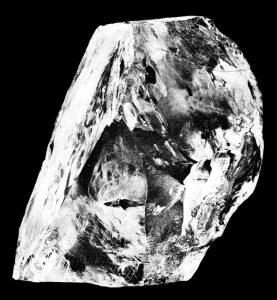
 It is the symbol of love. It’s a big part of the thing every girl wants to receive from the man she loves. Lot’s of people think that the size of the diamond is a show of stature, and I suppose it is, but there can be a point that would qualify as extreme. Such was the case on January 25, 1905, at the Premier Mine in Pretoria, South Africa, when a 3,106 caret diamond was discovered during a routine inspection by the mine’s superintendent. Weighing 1.33 pounds, and christened the “Cullinan,” it was the largest diamond ever found. Now, girls…I’m sure that you would love to have a large diamond ring, but carrying around a 1.33 pound ring on your finger would be just a little bit much. Still, I would have thought that the owner might have cut the stone into as large a cut stone as possible to be used for a museum piece, but he had very different plans.
It is the symbol of love. It’s a big part of the thing every girl wants to receive from the man she loves. Lot’s of people think that the size of the diamond is a show of stature, and I suppose it is, but there can be a point that would qualify as extreme. Such was the case on January 25, 1905, at the Premier Mine in Pretoria, South Africa, when a 3,106 caret diamond was discovered during a routine inspection by the mine’s superintendent. Weighing 1.33 pounds, and christened the “Cullinan,” it was the largest diamond ever found. Now, girls…I’m sure that you would love to have a large diamond ring, but carrying around a 1.33 pound ring on your finger would be just a little bit much. Still, I would have thought that the owner might have cut the stone into as large a cut stone as possible to be used for a museum piece, but he had very different plans.
Frederick Wells was 18 feet below the earth’s surface when his light flashed off of something embedded in the wall just above him. I’m sure he had a pretty good idea of what he had. His discovery was immediately presented to Sir Thomas Cullinan, the mine’s owner. Cullinan decided to sell the diamond to the Transvaal provincial government. Transvaal presented the stone to Britain’s King Edward VII as a birthday gift. They were worried that the diamond might be stolen while in transit from Africa to London, so King Edward VII arranged to send a phony diamond aboard a steamer ship guarded by detectives as a diversionary tactic. While the decoy slowly made its way from Africa on the ship, the Cullinan was sent to England in a plain box. It was an amazing plan, and I can certainly understand their concerns. King Edward VII entrusted the cutting of the Cullinan to Joseph Asscher, head of the Asscher Diamond Company of Amsterdam. Asscher had cut the famous Excelsior Diamond, a 971 carat diamond found in 1893. He studied the Cullinan stone for a full six months before even attempting the cut. On his first attempt, the steel blade broke, with no effect on the diamond. That had to be enough to break his confidence. On the second attempt, the diamond shattered exactly as planned, but Asscher fainted from nervous exhaustion immediately after.
The Cullinan was later cut into nine large stones and about 100 smaller ones. In total, the diamonds were 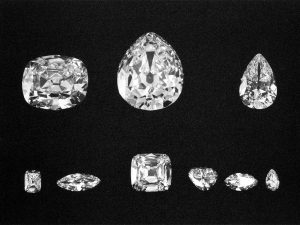 valued at millions of dollars. The largest stone is called the “Star of Africa I,” or “Cullinan I,” and at 530 carats, it is the largest cut fine quality colorless diamond in the world. The second largest stone, the “Star of Africa II” or “Cullinan II,” is 317 carats. Both of these stones, as well as the “Cullinan III,” are on display in the Tower of London with Britain’s other crown jewels, so I guess that part of the diamond ended up in a museum. The Cullinan I is mounted in the British Sovereign’s Royal Scepter, while the Cullinan II sits in the Imperial State Crown. Both fitting placements for such stones. Of course, the value of the stones would increase with cutting. The original stone was insured for $1,250,000 in 1905, and would be valued at $30,179,000 today.
valued at millions of dollars. The largest stone is called the “Star of Africa I,” or “Cullinan I,” and at 530 carats, it is the largest cut fine quality colorless diamond in the world. The second largest stone, the “Star of Africa II” or “Cullinan II,” is 317 carats. Both of these stones, as well as the “Cullinan III,” are on display in the Tower of London with Britain’s other crown jewels, so I guess that part of the diamond ended up in a museum. The Cullinan I is mounted in the British Sovereign’s Royal Scepter, while the Cullinan II sits in the Imperial State Crown. Both fitting placements for such stones. Of course, the value of the stones would increase with cutting. The original stone was insured for $1,250,000 in 1905, and would be valued at $30,179,000 today.

